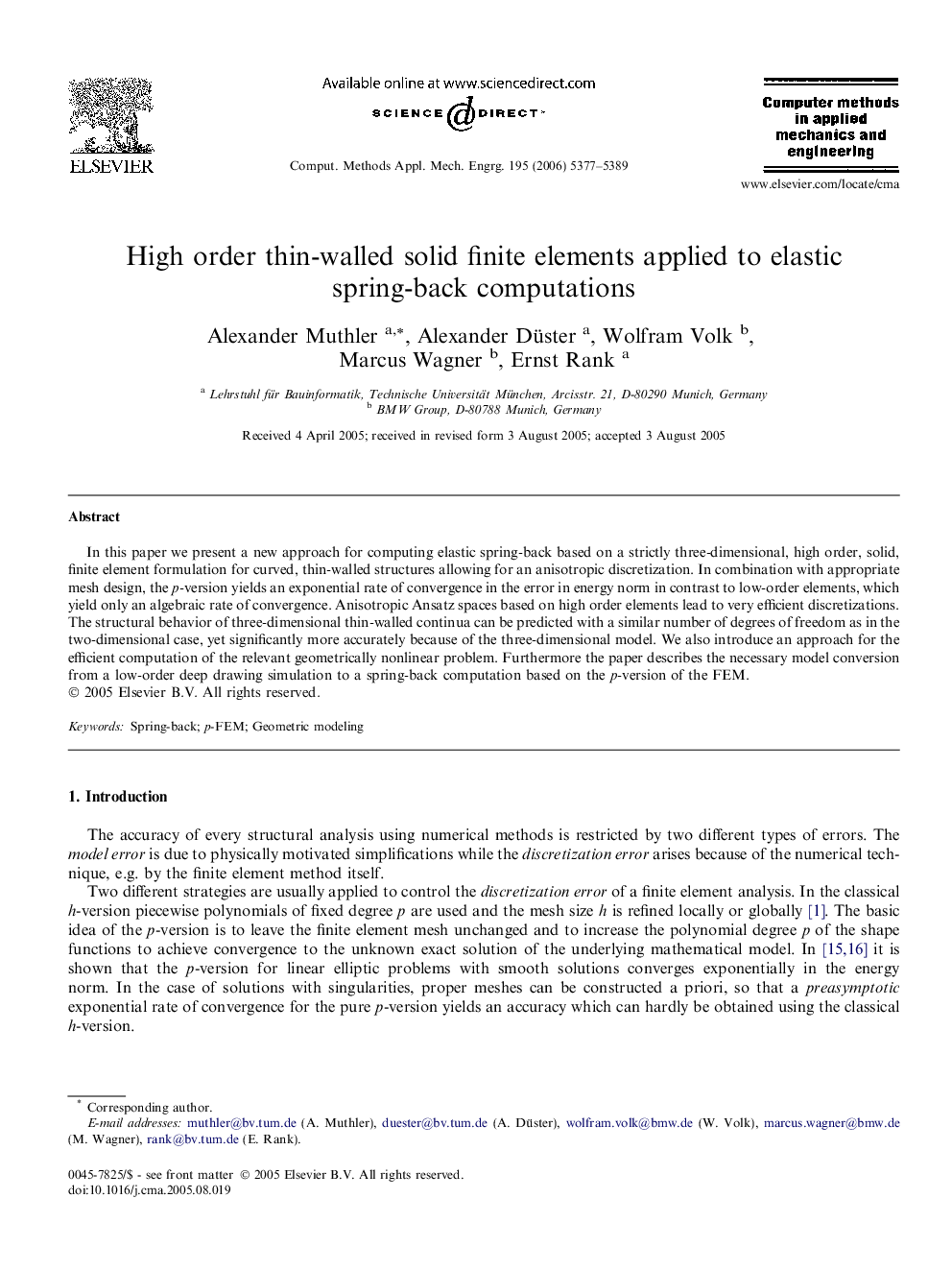| Article ID | Journal | Published Year | Pages | File Type |
|---|---|---|---|---|
| 500488 | Computer Methods in Applied Mechanics and Engineering | 2006 | 13 Pages |
In this paper we present a new approach for computing elastic spring-back based on a strictly three-dimensional, high order, solid, finite element formulation for curved, thin-walled structures allowing for an anisotropic discretization. In combination with appropriate mesh design, the p-version yields an exponential rate of convergence in the error in energy norm in contrast to low-order elements, which yield only an algebraic rate of convergence. Anisotropic Ansatz spaces based on high order elements lead to very efficient discretizations. The structural behavior of three-dimensional thin-walled continua can be predicted with a similar number of degrees of freedom as in the two-dimensional case, yet significantly more accurately because of the three-dimensional model. We also introduce an approach for the efficient computation of the relevant geometrically nonlinear problem. Furthermore the paper describes the necessary model conversion from a low-order deep drawing simulation to a spring-back computation based on the p-version of the FEM.
